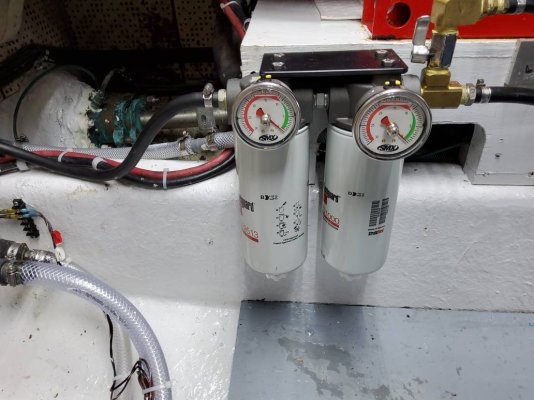Vacuum leaks can be tricky to identify. Many times spots that leak under vacuum do not leak when internal and external pressures equalize. So at rest they don't identify themselves with static drips.
A clear hose for troubleshooting would be nice if you can find some that don't collapse under vacuum. Usually the ones that dont collapse have fibers or wires or other obstructions to viewing small bubbles. Also the section or fitting you put the clear tube in may affect those tests if those connections where actually where the leak was. But it could definitely be useful.
You can also plug/cap the line just prior to the lift pump (no need to check after the lift pump since thats all pressurized lines), evacuate the fuel in the line, plumb in shop air as far before the Racor as you can and slowly increase pressure using a regulator to just under the rating of the Racor (25PSI). Then use something like Snoop or soapy water to find leaks. Keep in mind that again, sometimes leaks under vacuum may not show under slight positive pressure. So you might need to turn up the pressure closer to the 25 PSI rating of the Racor. If you set up such a rig I would put a shut off valve near the regulator in such a way that if no leak is obvious using the Snoop that you can isolate that section of line with pressure in it, close it off using the valve and see if it holds over time. But generally you can find even very small leaks with a quality product like Snoop.
From my limited experience with the Racors...it seems the majority of time the issue is in the Racor. Doing the clear hose trick with a small section of clear hose plumbed in just after the Racor might be quick and easy to eliminate or include the Racor. If it shows air after the Racor move it to just in front of the Racor and see if its still there.
From there I think you just have to go through each piece, disassemble, inspect, replace as needed and reassemble.
I basically just did the same thing. Made some upgrades along the way. I converted everything to 37 degree flare though (JIC or AN)


